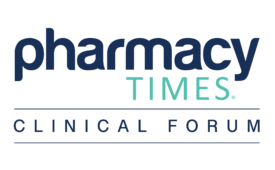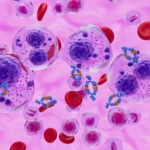
Pharmacists can bridge the treatment support gap for patients with hormone receptor–positive, HER2-negative breast cancer (HR+/HER2– BC) receiving cyclin-dependent kinase (CDK) 4/6 inhibitor therapy. In a Pharmacy Times Clinical Forum discussion held in Tampa, Florida, and moderated by Jacob K. Kettle, PharmD, BCOP, director of the Ellis Fischel Cancer Center in Columbia, Missouri, pharmacists discussed their work supporting patients with HR+/HER2– BC receiving CDK4/6 inhibitor therapy, highlighting emerging treatment data and opportunities to support patients through education and collaborative decision-making.
BC is the most common malignancy diagnosed in women in the US, accounting for approximately 30% of all new cancer cases each year. In 2024, an estimated 310,720 new cases of invasive BC are expected to be diagnosed. HR+/HER2– is the most prevalent subtype, accounting for nearly 70% of all new cases. Patients with HR+/HER2– BC are at high risk of relapse—approximately 30% by year 5. During the discussion, Kettle recognized the positive outcomes observed in many patients receiving these therapies while emphasizing the need for enhanced support in high-risk populations.
“Looking on the bright side, [a] 70% chance of no recurrence at [5] years is pretty remarkable for most patients, but that’s still not high enough if you’re in that 30% category. And so a lot of work still needs to go into figuring out how to drive that [relapse] number down further and further,” Kettle said.
Treatment for HR+/HER2– BC can be complex due to a required multifaceted approach involving combinations of surgery, radiation, chemotherapy, endocrine therapy (ET), and targeted therapies. Moreover, many patients struggle to navigate these complicated treatment pathways due to financial toxicity and lack of access to treatments as well as individual expectations and preferences. These barriers significantly impact patient adherence to treatment, which may worsen their overall health outcomes.
The overwhelming costs associated with covering medical oncologists, radiation, surgery, and oral chemotherapy can be burdensome as well, potentially causing a decline in adherence. It can be particularly difficult for patients from 2-income households who may struggle when transitioning to 1 income after leaving work for treatment. Often, these households receive assistance based on income from the prior year, which greatly impacts the amount of financial support that they are given.
“We can get these patients sometimes on treatment, but we can’t keep them on treatment because of the cost of the medications,” said Thomasina Morris, MHA, RPh, BCOP, a pharmacist at the Moffitt Cancer Center in Tampa, Florida. “That’s one of the hardest things. We can write a script, [and] we can give the script to the patient. The minute they go and fill it, the first call we get is [to say], ‘I can’t afford it.’”
Access to treatment is often another barrier, especially when considering social determinants of health (SDOH). For example, Black patients with HR+/HER2– BC tend to have worse overall outcomes than Asian patients on these same therapies, which points to the potential impact of SDOH on treatment outcomes and the impact of delays in treatment initiation that have been noted to occur for Black patients. However, continued studies into the treatment gaps experienced by Black patients aim to bring awareness to the issue and accelerate their access to treatment.
Patients from rural areas also face significant barriers due to lack of access to academic medical institutions or larger care centers that can provide them with the testing and treatment options most suited for their individual cases. Oftentimes, patients in rural populations receive diagnoses when they’ve already progressed to later stages of disease. Additionally, rural areas tend to have lower high school graduation rates, which can affect this population’s background knowledge of science, potentially impacting their comprehension of medical materials provided to them if they are not supported by additional personalized education.
The panelists discussed the significant impact of education, expectations, and preferences when discussing treatment pathways with patients. Patients may rely on sources like “Dr Google” for information and guidance, leading to misconceptions, unnecessary worry, or a lack of accurate knowledge about their condition.
“The first thing [you do] when you get a diagnosis [is] you Google it, and you talk to your friends too. Most people know somebody who had breast cancer. ‘You say they got chemotherapy, and I’m getting a pill. Why?’” said Paul Furler, BCOP, an oncology clinical pharmacist at BayCare Health System in Tampa, Florida. “I think there’s just that education, [the need to explain] why we do certain things in different cancers and different mutations.”
The reliance on the internet as a primary information source can also influence a patient’s treatment expectations, and unexpected recommendations may lead to hesitation about or resistance to accepting alternative or personalized treatment pathways. In these cases, it becomes crucial for clinicians to set realistic expectations with patients and help them understand the rationale behind their treatment recommendations.
Kettle acknowledged the potential gaps leading to patients’ misunderstanding of treatment pathways but explained that sometimes there can also be more that pharmacists could do to better match treatment to a patient’s specific personal needs and lifestyle. In this way, engaging with the patient through both education and collaborative decision-making can be beneficial for treatment adherence and overall outcomes.
“I think the thing we haven’t done the best job of is matching all these new treatment options and matching all those things we could do to what suits the patient the best,” Kettle said. “So this is not a derogatory statement or a negative comment necessarily. It’s an opportunity.”
For high-risk patients with HR+/HER2– BC, the use of CDK4/6 inhibitors has shown considerable promise in patients who are susceptible to relapse by targeting specific mechanisms that drive proliferation of malignant cells, Kettle explained. Evidence suggests that use of adjuvant CDK4/6 inhibitors, such as abemaciclib (Verzenio; Eli Lilly and Company), followed by ET may address this current unmet need for high-risk patients in the first line.
In the phase 3 MONARCH 3 trial (NCT02246621), patients received abemaciclib by mouth twice a day for 2 years, followed by ET thereafter for patients with early-stage HR+/HER2– BC.1 After a 5-year follow-up, disease-free survival was significantly better in those who had 2 years of CDK4/6 inhibitor therapy. Further, abemaciclib is unique among CDK4/6 inhibitors because it is given as a continuous regimen, unlike other dosing regimens with interruptions. Michael Faltas, PharmD, senior director of pharmacy at Tampa General Hospital and Cancer Institute in Florida, indicated it is often a first choice for patients with cardiovascular complications.
However, pharmacists face multiple challenges when prescribing abemaciclib and encouraging patient adherence to treatment. Abemaciclib is associated with multiple toxicities, including neutropenia, anemia, gastrointestinal issues, and potential hepatotoxicity. Managing these adverse effects (AEs) can necessitate dose adjustments or treatment interruptions, potentially leading patients to feel uncomfortable or hesitant to continue treatment. Further, the potential for relapse may make patients question the benefit of moving forward with treatment.
“There are challenges with having patients going through all [2] years for abemaciclib,” said Jorge G. Avila, PharmD, BCOP, a clinical specialist in the Breast Oncology Program at Moffitt Cancer Center. “But you’re asking some of these patients to take medication for [2] years or [3] years with the hopes that there’s no recurrence in disease. And some hold on to that and, based on their experience with it and their toxicities, may say, ‘Is it worth it or not?’”
Pharmacists play a crucial role in addressing the unmet needs of patients with HR+/HER2– BC and have multiple opportunities to optimize treatment responses, avoid toxicities, and manage dosage to mitigate AEs. Additionally, they are essential in supporting the development of clinical pathways through standardization of a stepwise treatment algorithm for frontline use of CDK4/6 inhibitors, monitoring response and toxicity, and developing a program for patient education and support.
“The more the patient feels like they’re involved in their care, the better,” said Furler. “If they feel like they have a say in their decision [or] if they hear [the adverse] effects and they are not interested in that drug, I think that’s important to consider, vs just following down pathways blindly, more or less. The more input that they have, even just feeling like their input is valued, is important.”
Faltas noted that he will conduct regular treatment adherence calls, which he has found to be effective. “Every oral agent has its own schedule for those adherence calls. Some of them we know there’s going to be high toxicity, so we schedule week [1], week [3], whatever the regimen is. So based on every agent, we have to make sure that we’re making those calls. I think it’s motivational counseling and support for the patient and provides better adherence,” Faltas said.
Frank Scimeca, PharmD, MBA, BCOP, vice president of pharmacy services at Florida Cancer Specialists and Research Institute in Tampa, shared the institution’s use of algorithms to classify patients from low to high risk. “Whether it’s comorbidities, high-risk medications, support systems at home, [SDOH], as well as looking at pharmacogenomics and cytogenetics, we utilize that algorithm to discern a low-risk from a high-risk patient,” he said.
Further, specialized software is available to help streamline communication with oncologists and other specialists in multidisciplinary clinics to improve patient treatment management. Furler elected to use a shared notes system that includes more comprehensive health information about a patient as well as timely updates regarding treatment progress, rather than just chemotherapy prescriptions.
Pharmacists have a pivotal role in supporting patients with HR+/HER2– BC undergoing CDK4/6 inhibitor therapy. Pharmacists can bridge gaps in care and ensure patients receive the necessary support for treatment adherence and management of AEs. Through education, treatment counseling, and personalized care, pharmacists can enhance patient outcomes and contribute to a more effective and patient-centered approach for these therapies. The ongoing evolution of emerging therapies, such as CDK4/6 inhibitors, underscores the need for pharmacists to remain at the forefront of patient care, driving forward the mission to reduce relapse rates and improve quality of life for patients.
REFERENCE





